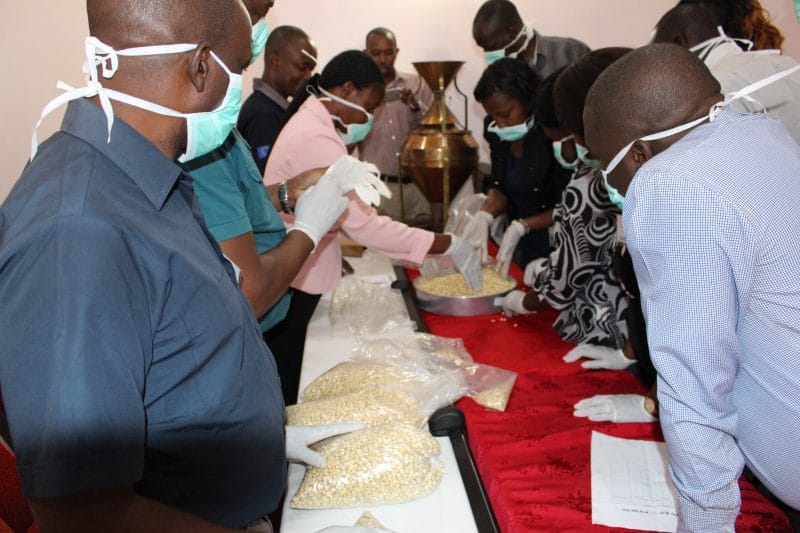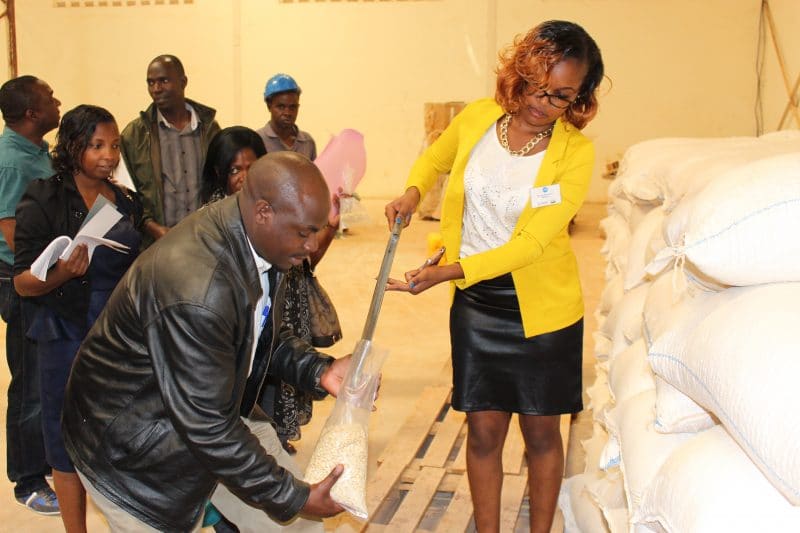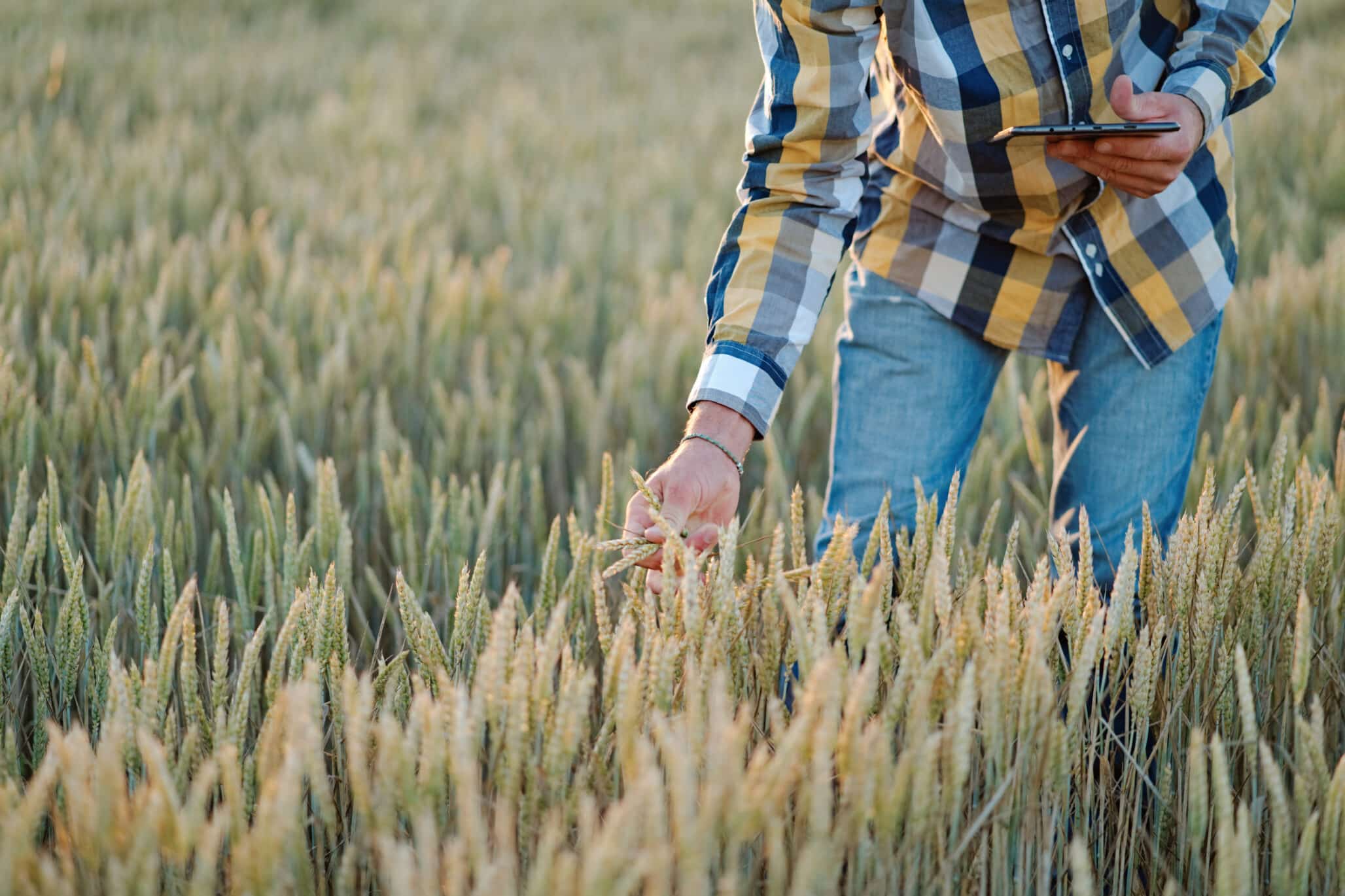Lack of quality and improved seed in the Common Market for Eastern and Southern Africa (COMESA) countries has contributed significantly to food insecurity and poverty. The availability of quality seed in this region in terms of variety, accessibility, and volume currently stands at a meagre 20%. This is caused by a lack of harmonized seed policy environment in the region, exhibited by diverse and complex seed trade laws, and regulations for seed production, certification, variety release and phytosanitary/ quarantine measures for seed import and export cross the borders.
Total seed being traded in the COMESA-EAC-SADC Member States averages USD1.4 billion, equivalent to less than 2% of global seed trade. However, with a harmonized seed trade system, growth in the seed sector could reach USD5 billion in the next five years.
In view of the above, the COMESA Seed Programme initiative was created in response to the COMESA Ministers of Agriculture directive which took place in Seychelles, 2008, to have regionally harmonized seed trade regulations. In the period between 2010 and 2014, COMESA, through its Specialised Agency of the Alliance for Commodity Trade in Eastern and Southern Africa (ACTESA), managed to have the COMESA Seed Trade Harmonization Regulations announced in May 2014, and also to put in place a strategic plan, the COMESA Seed Harmonization Implementation Plan (COMSHIP).
The overall goal of COMSHIP is to implement COMESA Seed Trade Harmonization Regulations leading to increased seed production, reliability, trade and competitiveness of the seed industry in the COMESA region. Currently, the COMESA region is accessing less than half a million metric tonnes of quality seed, against the requirement of about two million tonnes.
Implementation Status
Currently, the COMESA Seed Harmonization Implementation Plan has been officially launched in 18 COMESA Member States, namely Burundi, Comoros, Djibouti, DR Congo, Egypt, Eritrea, Ethiopia, Kenya, Madagascar, Malawi, Mauritius, Rwanda,Seychelles, Sudan, Swaziland, Uganda Zambia, Zimbabwe and only remaining with Libya, Tunisia and Somalia.
Seven COMESA Member States (Burundi, Malawi, Rwanda, Kenya, Uganda, Zambia and Zimbabwe) have completely aligned their national seed laws to the COMESA Seed System. Out of these seven COMESA Member States, three are member of SADC and four are members of EAC
The COMESA Seed Training Programme was developed and implemented, with 270 delegates (23% female) so far trained from 13 COMESA Member States. These are Burundi, Djibouti, D. R Congo, Egypt, Ethiopia, Kenya, Madagascar, Malawi, Rwanda, Swaziland, Uganda, Zambia and Zimbabwe, of which 6 are members of SADC and seven are members of EAC
In addition, the COMESA Variety Catalogue in available online https://varietycatalogue.comesa.int/web/login with 43 varieties regionally released. The programme is also in the process of developing COMESA Seed Labels and Certificates to be utilized by seed companies for large seed assignment crossing the borders and in-country seed trade in smaller packages.
COMSHIP Challenges
Only nine COMESA Member States are implementing COMSHIPthrough the support of USAID and DFID. This brought about inertia in non-supported COMESA Member States. In addition, there is lack of awareness of the COMESA Seed System by the private seed sector due to inadequate information about the COMSHIP.
Lessons Learnt
Among the lessons learnt was that mobilization of COMSHIP resources from other development partners like USAID and DFID was key in making sure the COMESA Member States were committed. This was demonstrated in the COMSHIP Mutual Accountability Framework (COMMAF) meetings. The involvement of seed stakeholders and the participatory approach in the alignment of the national seed laws to the COMESA Seed System was critical.
It is necessary to create awareness of the COMESA Variety Catalogue to seed companies to allow more seed companies register their best varieties on the COMESA variety catalogue. Moreover, it is important to use COMESA high-level officials in making the seven COMESA Member States remaining committed to aligning their national seed laws/regulations to the COMESA Seed System.
Focus of COMSHIP 2019-2023
The focus of COMESA Seed Harmonization Implementation Plan in the next four years (2019 – 2023) is to support full domestication of the COMESA Seed Trade Harmonisation Regulations in all 21 COMESA Member States. Other areas of focus will be:
- To support the private seed companies in registering their seed on the COMESA Variety Catalogue and engage them on the utilisation of the COMESA Seed Labels and Certificates with the view of expanding to include SADC and EAC;
- To support an on-line electronic seed certification system for National Seed Authorities to enable seed companies to register seed for production, certification and listing of the National Catalogue, thereby linking them to the COMESA Variety Catalogue ensuring automatic national variety listings;
- To convene a seed company’s platform facilitated by the National Seed Trade Associations (NSTAs) and address constraints of production and trading on COMESA Seed, ACTESA / COMESA sensitize the benefits of the COMESA Seed System to enable more seed companies register regional varieties on the COMESA Variety Catalogue and identifying trading routes of seed companies and streamlining solutions to trading under Tripartite FTA Seed Trade Platform (TFTA);
- To support accreditation of COMESA Member States to the International Seed Testing Association (ISTA), the Organisation for Economic Cooperation and Development (OECD) and the International Union for the Protection of New Varieties (UPOV);
- To train private seed sector in self-certification of the 12 COMESA trade-led crops and audit of the system;
- Support establishment of COMESA “border-less” plant health inspections within bilateral agreements through intensive training of the customs staff and seed companies on the harmonised seed documentations;
- Development COMSHIP outreach and media strategy to enhance overall awareness of accomplished interventions and support of COMESA seed demonstration plots for seed companies with varieties on the COMESA Variety Catalogues;
- Further implement the COMESA Seed Training Programme to include countries in SADC and EAC;
- Support production of niche seed of small grains and legumes less attractive to regional / international seed companies focusing on hybrid seed crops so that benefits of the harmonised seed system benefit all types of seed companies, namely national, regional and international seed companies;
- Design, produce and distribute of COMESA Seed System Manuals / Protocols for use by seed inspectors, analysts and seed that would also cover SADC and EAC within the TFTA;
- Support harmonisation of COMESA-wide Plant Variety Protection (PVP) in line with existing harmonized PVP in SADC, EAC and ARIPO. This will provide breeders reasonable return on their investments and benefit farmers with new varieties that are high yielding, drought tolerant, disease resistant, etc leading to high productivity and high-quality seed on the market;
- Explore ways of coming up with a common Variety Identification Number (VIN) for same varieties that are marketed under different brand names to enable them getting registered on the COMESA Variety Catalogue and also of SADC and EAC.
COMSHIP Mutual Accountability Framework (COMMAF)
COMESA through its specialized agency, the Alliance for Commodity Trade in Eastern and Southern Africa (ACTESA) has now developed the COMSHIP Mutual Accountability Framework (COMMAF). The COMMAF framework outlines the principles, mechanisms, tools and specific activities to facilitate mutual accountability in COMSHIP. The COMMAF strives to assist in the evaluation, review, debate, dialogue and negotiation performance within public-private partnership arrangements of COMSHIP.
With the COMMAF in place, the monitoring of COMSHIP at national and regional level shall bring about coherence, synergies and consistence among the COMESA Member States. This includes annual reviews of COMSHIP which shall bring shared responsibility for both the public and private seed sector through multi-stakeholder engagement already established by ACTESA.
The independent reporting, unlike self-reporting embedded in COMSHIP, shall bring about mutual trust and ownership in COMSHIP. Through article 130 (a) of the Treaty, COMESA has options for food and nutritional security for its people. This will also contribute to the rise of the COMESA Member States seed companies, seed distributors and seed dealers enhancing intra-and extra regional seed trade. This will enhance COMESA seed stakeholder’s quality and improved seed availability to small-holder farmers in a sustained, suitable, affordable, timely, reliable and profitable manner.
New COMESA Labels and Certificates to Spur Regional Seed Trade
Intra-regional seed trade is set for a boost following the introduction of seed labels and certificates to be utilized by seed companies for large consignments crossing the borders. The move is intended to spur regional trade through improved seed varieties across the region.
The COMESA Seed Labels and Certificates will be used by member states to identify seeds in the market that meet the COMESA Seed Trade Harmonization Regulations of 2014. This development is in line with the COMESA Seed Harmonization and Implementation Plan (COMSHIP) that provides a framework for the 21 COMESA Member States to trade, facilitate seed industry and support to local seed companies.
Samples of the labels and certificates were presented to regional seed companies and National Seed Review teams from seven COMESA Member States that have aligned their national seed laws to the COMESA Seed Policies. These include Kenya, Uganda, Rwanda, Burundi, Zimbabwe, Zambia and Malawi.
The COMESA seed labels are based on the OECD labels and will apply to four seed classes: Pre-basic Seed, Basic Seed, Certified Seed (1st Generation) and Certified Seed (2nd Generation).
Labelling Export Seeds
COMESA takes the lead in labelling export seeds as it is set to become the first regional economic community in the world to introduce the use and distribution of seed labels and certificates as a way of improving access to quality seeds in the region. This move is aimed at guaranteeing the integrity of seeds traded in the region and is expected to impact positively the approximately 130 million people in the region who are currently food insecure and experiencing chronic poverty and hunger for failure to get quality and improved seed.
The potential total seed market in COMESA is at two million metric tons of quality and improved seeds. Currently, the region is producing and accessing less than 520, 000 metric tons. Out of 80 million small-holder farmers in the COMESA region, only 20% have access to quality and improved seed, a situation thathas continued to impact negatively on the people.
This is attributed to fragmented and small national markets in the region whereby each country operates its own seed policies and regulations different from other COMESA Member States. This is not only costly to the private sector but also results in prolonged delays before good quality seed can find its way to the farmers.
Although COMESA is home to some of the major seed producing countries in Africa such as Egypt, Zambia, Zimbabwe, Kenya, Malawi and Uganda, the levels of supply remain stagnant with each country differing in the laws, procedures and systems applied to the seed value chain. Companies are left to focus only on the domestic markets and thus unable to supply other markets in the region that may have greater demand.
It is now expected that once the seed labelling becomes operational, the COMESA Regional Seed Certificate will be issued by national seed authorities. But this will only happen upon verification that a seed lot registered on the COMESA Variety Catalogue was inspected, met COMESA field standards and went through laboratory analysis.
The labels and certificates were designed to certify the seeds as having been produced in accordance with all the requirements of the COMESA Seed Certification System as provided by the COMESA Seed Trade Harmonization Regulations. The design will consider consistency in quality and numbering. To ensure readability the labels will incorporate machine-readable features, security features and traceability across COMESA Member States
The COMESA Seed Labels and Certificates will be used by member states to identify seeds in the market that meets the COMESA Seed Trade Harmonization Regulations of 2014. This development is line with the COMESA Seed Harmonization and Implementation Plan (COMSHIP) that provides a framework for the 21 COMESA Member States to trade, facilitate seed industry and support to local seed companies.
The certificates would be given to seed companies upon verification that a seed lot was of a released variety on the regional catalogue. Seed exporting companies will be issued with a COMESA Regional Seed Certificate to confirm they are qualified.
Further, they will verify that seed multiplication was registered, inspected and met COMESA field standards and that the seed lot meets the minimum laboratory seed analysis standards of the COMESA Seed Trade Harmonization Regulations.
The labels will be tagged on bags of seed that will be traded across the countries that have aligned their national seed laws with COMESA harmonized laws. Currently, Kenya, Uganda, Rwanda, Burundi and Zimbabwe have completed aligning their national seed laws while Malawi and Zambia are in final stages of the process.
Working with the National Seed Authorities, the COMESA ACTESA will authorise the issuance of the COMESA Seed Labels and Seals for the seed companies. Eventually, the COMESA Seed Lot consignment will be incorporated into the COMESA Virtual Trade Facilitation System (CVTFS), an online system used for processing trade facilitation instruments and cargo monitoring.
Story submitted by COMESA














